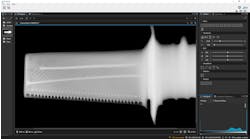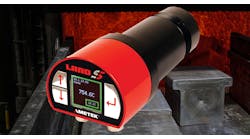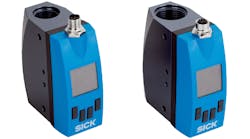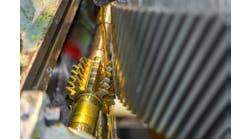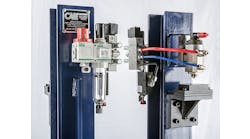There are hidden costs in every part of your organization, and maintenance activities are no exception. Beneath the standard costs, like labor and spare parts, expenses creep in, bloating the budget. It can be hard to understand just how much these are costing your operation and what exactly is driving them. Getting to the bottom of this is surely important, as if the costs are not reigned in they may quickly run the maintenance budget's already stretched budget into distress.
Numerous costs stem from poor execution of maintenance fundamentals. Why is that? Well, mostly because they are hard to measure. You will not work to improve things you don’t know are problematic in the first place. You might need to perform more data analysis with a better understanding of your maintenance metrics to get to the bottom of the problem. The data may not even be readily available, so the first step may be to collect information.
The good news is that some of these expenditures can be driven down without the use of fancy tools or equipment.
Are you leaking resources? How would you know? If so, how would you patch up your cost leaks and improve your overall maintenance performance?
Let’s dive straight in by looking at some frequently overlooked drivers of maintenance costs.
Unorganized and non-standard work practices. Sloppy work practices can lead to many downstream costs. This is usually an area that should be visited periodically, as is often ripe for improvement.
It is helpful to start by considering the 7 Wastes in Lean Manufacturing (or more, as some suggest.) For example, a technician may arrive to a job without the proper tools. In this case, waste may be found in the time gathering materials and tools for the job (both “Waiting” and “Transport”.) If a technician is not diligent in his work practices, the unforeseen costs can add up quickly.
With each inefficiency, the hours add up until more technicians are needed to maintain the same level of equipment maintenance. The effect can become compounded if more unexpected breakdowns occur.
Though it won’t cost much capital, solving this problem can take considerable effort. Procedures need to be reviewed and updated (mainly SOPs and maintenance checklists); and staff needs to be trained and committed to change. However, this type of shift can potentially provide the biggest savings.
Inefficiencies in equipment operation. Improperly maintained equipment can financially burden the business in several ways. These burdens may or may not be hidden, depending on what is actually being tracked. This may include:
• Increased energy costs;
• Loss in product quality;
• Reduced asset life;
• Wasted materials;
• Negative environmental impacts;
• Safety risks.
If you think your operation may be suffering from some of these issues, the first step is to measure their impact. In some cases, software may be required (more on this below.) Once you have a handle on the damage being done to your bottom line, you can target the losses and tighten up your maintenance approach on the affected equipment. Typically, this means implementing more advanced maintenance strategies.
Overtime-driven labor costs. Another standard source of costs in maintenance is overtime. Though many organizations track overtime hours, it’s not always a point of emphasis. The thing that can be hard to detect here are not the overtime costs themselves, but what is actually driving them.
With a good understanding of the reasons behind overtime hours, the operation can make better decisions on how to reduce them. Is it more cost effective to hire additional help, upgrade equipment, be more proactive, or have a better spare-parts inventory forecast? Such questions are easy to answer when you find the root cause of your problems.
Creeping inventory costs. Spare part inventory can be a sink for the maintenance budget, especially if you lack a thorough inventory tracking system and a centralized storage area. Since every part carries a cost, that expense could be wasted if parts sit on a shelf for years.
But reducing inventory is not always the answer. If critical spares are not on-site for equipment breakdowns, you could be stuck waiting a long time to make the repair, or be forced to implement improvised solutions, both of which will have a negative effect on your bottom line in one way or another — not to mention that emergency spare-part orders are more expensive than the regular ones.
Thus, an in-depth review of inventory needs should occur. To deal with this issue, a solid inventory-tracking system should be implemented, be it through a CMMS/EAM with inventory module or a standalone inventory software solution.
Unplanned downtimes. It should be noted that equipment downtime contributes to many additional expenses for the operation. This is seen through replacement-part rush orders, overtime, schedule adjustment, and ultimately in revenue loss. Studies have estimated that a single hour of downtime costs manufacturers at least $100,000.
One simple way to reduce downtime from the maintenance side is by improving teamwork and information flow, reducing silos, and increasing cooperation. By working directly with the operations team, maintenance can prescribe operating conditions that will extend the life of the equipment.
Other ways to reduce downtime include tracking accurate downtime information to adjust preventive maintenance schedule, implementing autonomous maintenance, and looking into condition monitoring and predictive analytics.
How CMMS helps. One common theme that is always discussed when we talk about how to control maintenance costs is the importance of finding what exactly is driving up those costs. Without an in-depth insight that sometimes is possible only through software solutions, it may be very hard to take that first step and determine the underlying reasons that generate these costs. A CMMS system can be very helpful in uncovering some of the budgetary effect of the issues previously mentioned here.
In the overtime example, a CMMS can help you understand exactly where the hours are going. Their drill-down approach allows you to see not only which assets are causing the most problems, but also why are they so problematic.
Additionally, a CMMS can help you track and calculate different performance metrics, such as MTTR and MTBF, maintenance schedule attainment, OEE, etc., and other metrics you can address to deliver significant productivity improvements.
Having a lot of hard-to-track costs is a slippery slope for any organization. The first step is to implement a system that lets you accurately track your operational costs. Once you have a better understanding of the impact of your operational activities, you can start to formulate a plan to eliminate unnecessary costs.
As a bonus, with the thorough analysis of your actions and their consequences, you can drive your maintenance performance to the next level.
Bryan Christiansen is the founder and CEO at Limble CMMS — an easy-to-use mobile CMMS software that takes the stress and chaos out of maintenance by helping managers organize, automate, and streamline their maintenance operations.



